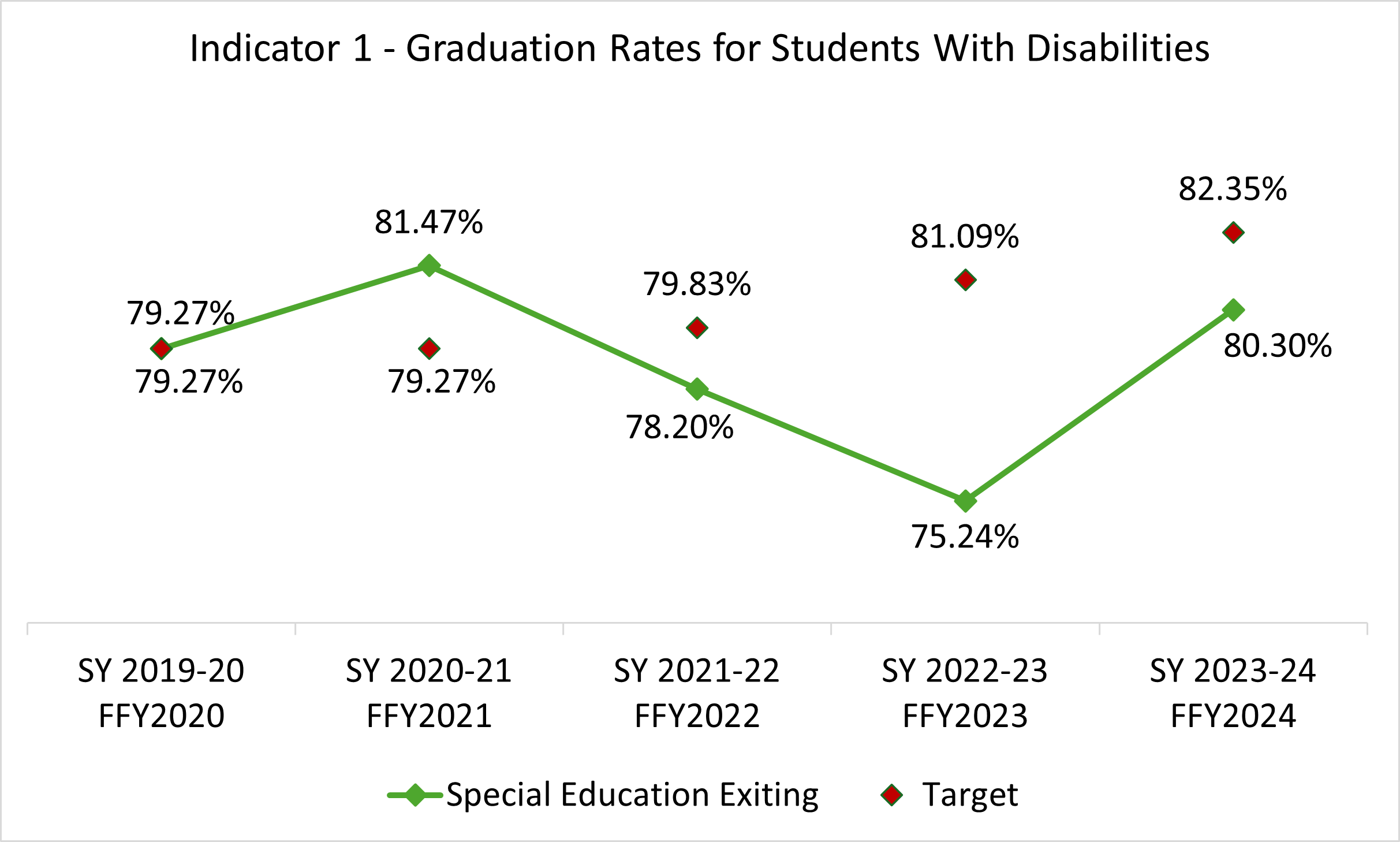You are here
Indicator 1 - Graduation
Definition
Percent of youth with Individualized Education Programs (IEPs) exiting special education due to graduating with a regular high school diploma.
(20 U.S.C. 1416 (a)(3)(A))
Measurement
Current Measurement (SY2020-21 forward): States must report a percentage using the number of youth with IEPs (ages 14-21) who exited special education due to graduating with a regular high school diploma in the numerator and the number of all youth with IEPs who exited high school (ages 14-21) in the denominator. (This measurement aligns with Indicator 2 and makes them comparable).
Previous Measurement (SY 2016-17 to SY 2019-20): States must report data for children with disabilities using an adjusted cohort graduation rate required under the ESEA. Colorado chose to use the 7-year cohort graduation rate for Indicator 1. This means that students who entered 9th grade are tracked for the following 7 years to see whether or not they received high school diplomas. Colorado thus defined graduation as: [Number of students with disabilities who received a regular diploma in seven years or less of entering from 9th grade] DIVIDED BY [Number of students with disabilities entering from 9th grade (plus the number of transfers in minus the number of verified transfers out)]. Students who were reported as students with disabilities at any grade between 9th and 12th are included in the cohort as students with disabilities.
How is Colorado doing on this indicator?
Targets for the Current SPP/APR Cycle
| Federal Fiscal Year (FFY) | 2020 | 2021 | 2022 | 2023 | 2024 | 2025 |
|---|---|---|---|---|---|---|
| Data from School Year | 2019-20 | 2020-21 | 2021-22 | 2022-23 | 2023-24 | 2024-25 |
| Target >= | 79.27% | 79.27% | 79.83% | 81.09% | 82.35% | 83.61% |
Improvement Strategies for Transition Age Students (Indicators 1, 2, and 14)

- Sequencing of Services Framework
- A multi-agency team has developed a sequencing of services framework to clarify student outcomes from junior high through age 24 and to identify the role of each stakeholder (families, community-centered boards, division of vocational rehabilitation, etc.) in assisting students to meet defined outcomes.
- Capstone Projects
- CDE established a Capstone workgroup to build school district personnel’s knowledge of how to develop capstones aligned with school district graduation requirements for students with significant needs.
- Equity work
- CDE/DVR/Colorado Community College System (CCCS) offers professional learning opportunities to school district personnel to assure equitable access for students with disabilities access to CTE programs (5-year project – 2021-2026):
- CDE will partner with the largest district in Colorado to improve dropout and graduation rates, and post-school outcomes for young men of color with disabilities.
- Training and Technical Assistance
- CDE will partner with the Transition Coalition to train, mentor, and facilitate district teams to increase their knowledge of IDEA and secondary transition planning (Spring 2022)
- CDE is developing training on person-centered planning for students with disabilities (SY 2021-22)
- CDE is conducting parent focus groups to determine parent training needs, develop trainings to address needs of families and school district personnel (SY 2021-22)
- CDE provides opportunities for LEAs to engage in post-school outcomes data discussions to identify strengths in current practices and opportunities to improve response rates from Hispanic and Black students through the targeted support.
- CDE offers statewide regional trainings on a variety of transition topics
- CDE provides monthly transition talks related to all aspects of secondary transition planning
- CDE hosts a statewide conference, the Transition Leadership Institute, each year to build LEA knowledge of evidence-based secondary transition practices
Additional Resources
The feedback period has closed, this video is included for information on the target setting process (the Indicator 1 section starts at 00:04:18).
For more information, contact:
Having trouble with this webpage?
If you have problems with broken links or accessing the content on this page, please contact the Exceptional Student Services Unit at ESSU@cde.state.co.us. Please copy the URL link for this page into the email when referencing the problem you are experiencing.



Connect With Us





